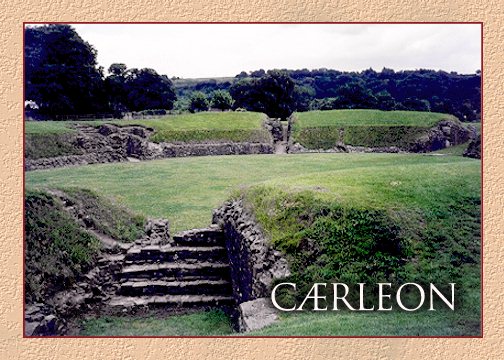
Return to Roman Ruins in Britain

Caerleon (Isca) is the site of a legionary fortress which was established by Frontinus in AD 74 or 75, soon after the conquest of the Silures in southern Wales. For over two hundred years, it was the base for Legio II Augusta, and, together with Chester (Deva) on the northern border of Wales and York (Eboracum), one of three such legionary forts in Roman Britain.
The amphitheater pictured above is built on the typical oval plan, with passages dividing the earthern banks into segments contained by buttressed stone walls which supported tiers of wooden benches. The entrance on the far side of the arena is one of two rooms where gladiators or other performers would have waited before entering the arena.
Caerleon also is the site of the only legionary barrack blocks in Europe that still are visible. There are four, each of which would have housed a century and its centurion.
The Fortress Baths were constructed on space reserved for them when the legionary fortress first was planned. Both the natatio (outdoor swimming pool) and frigidarium (cold bath) are protected by a modern building.
In the Roman Legionary Museum is a remarkable collection of almost one hundred carved gemstones recovered from the drain of the Baths, as well as the silver tip of a vexillum, the banner bearing the name of a vexillation, which usually comprised two cohorts, or almost a thousand men, detached from the legion and serving under its own standard.